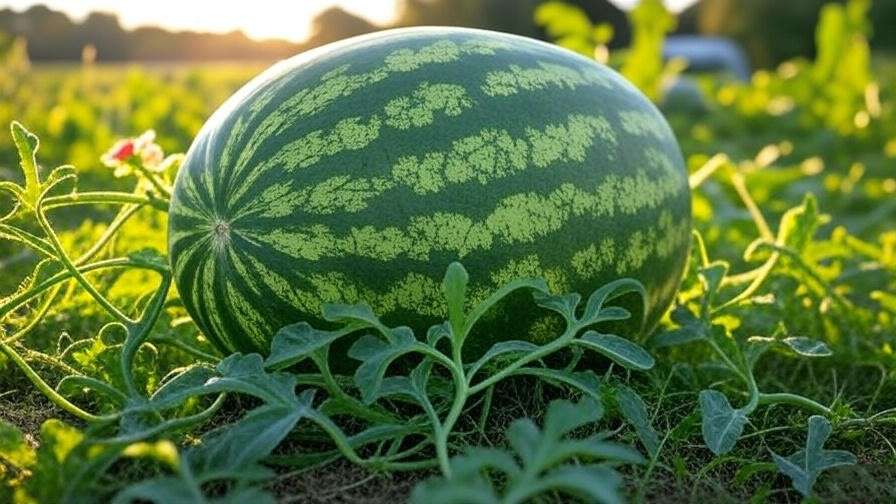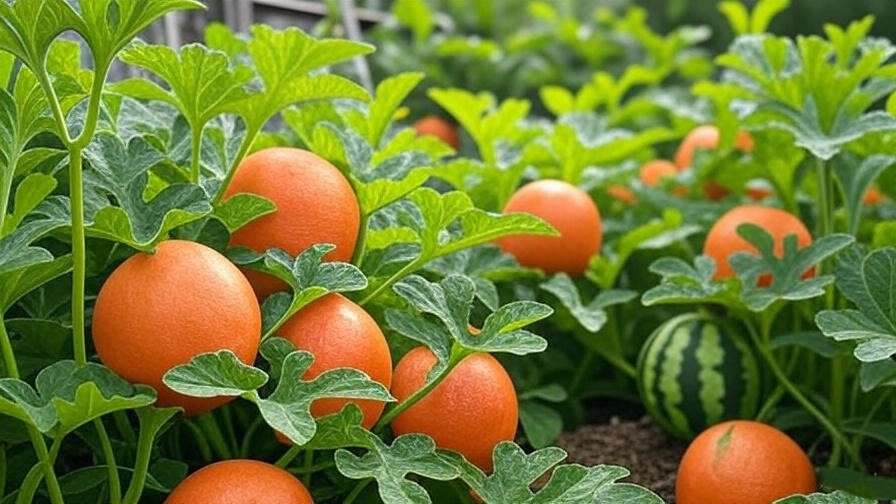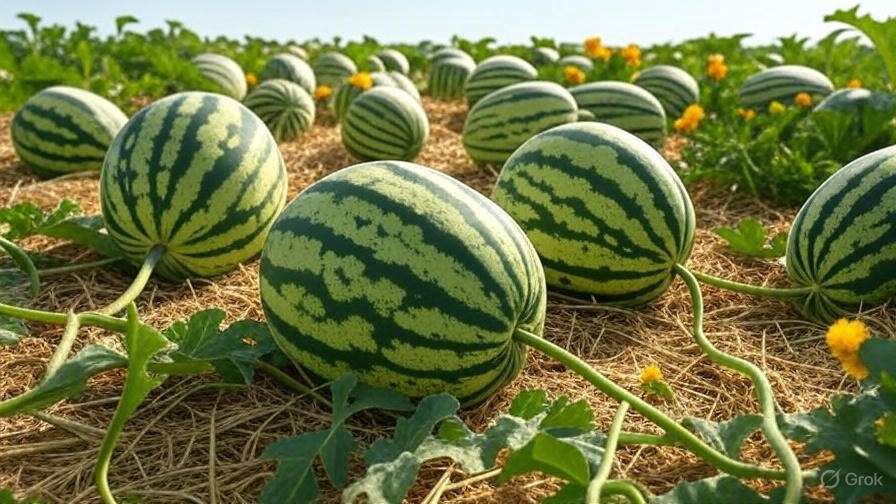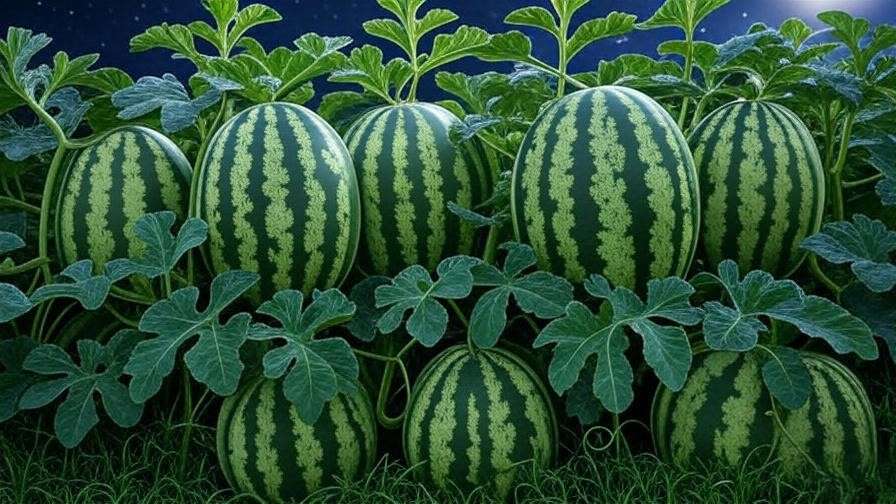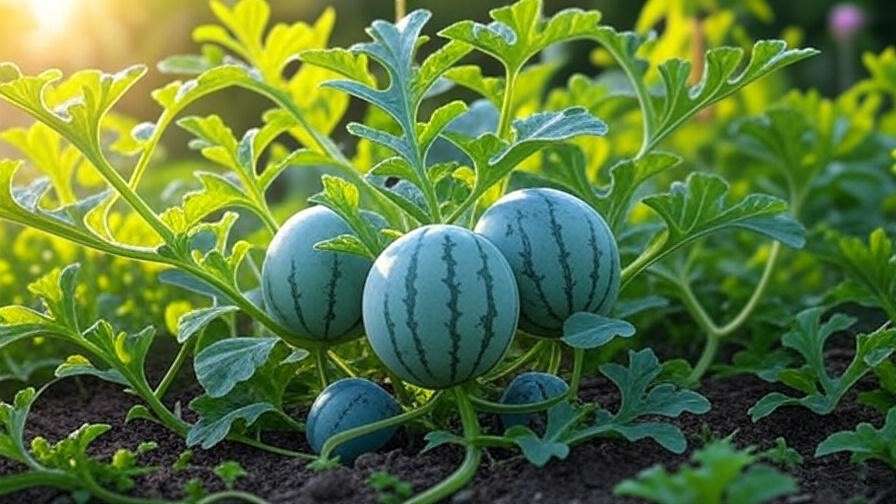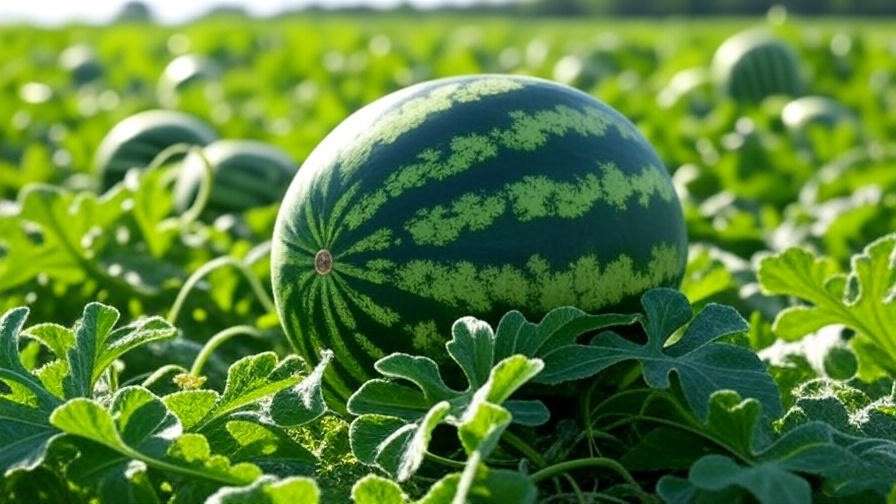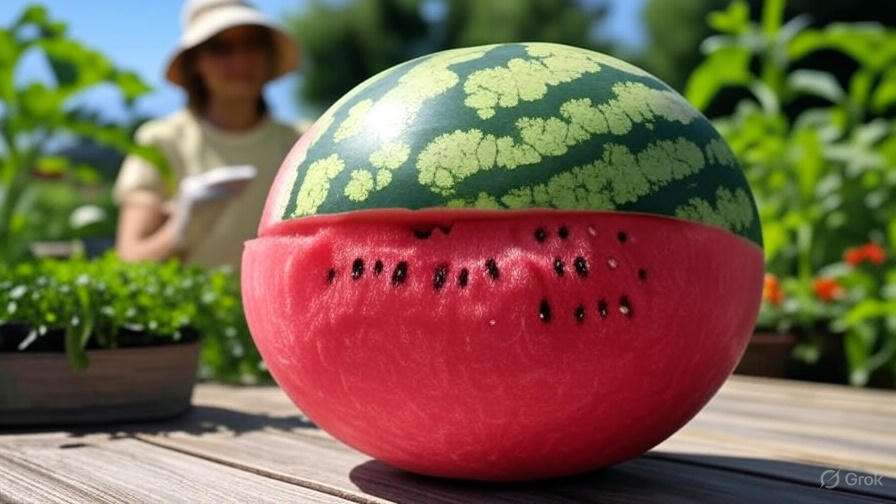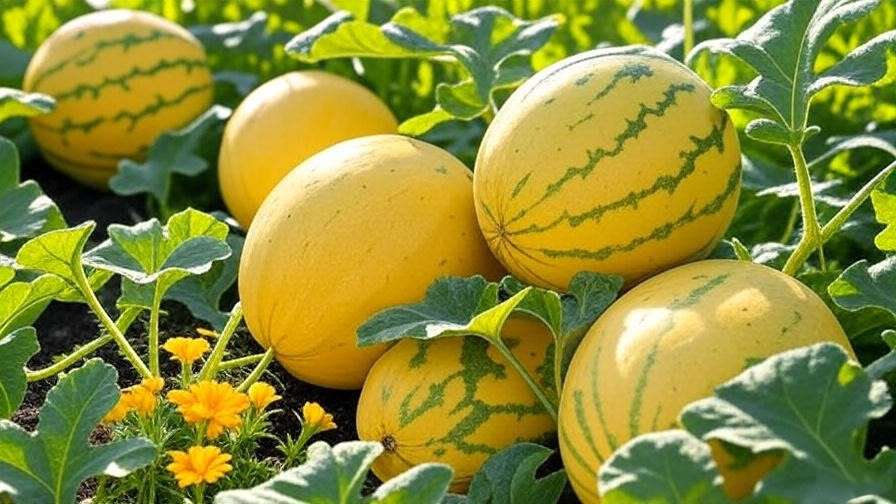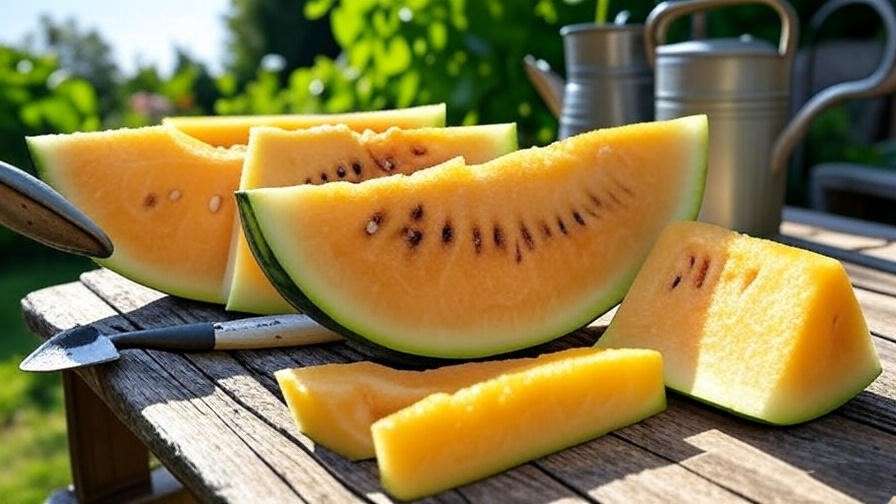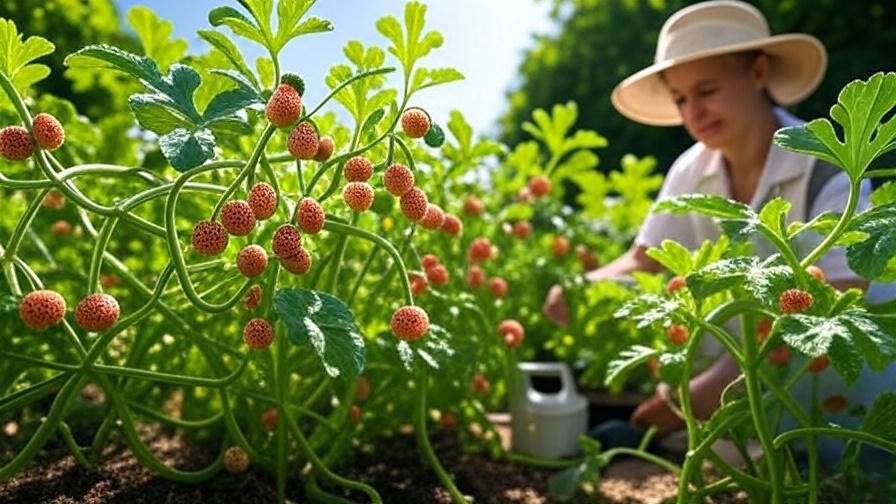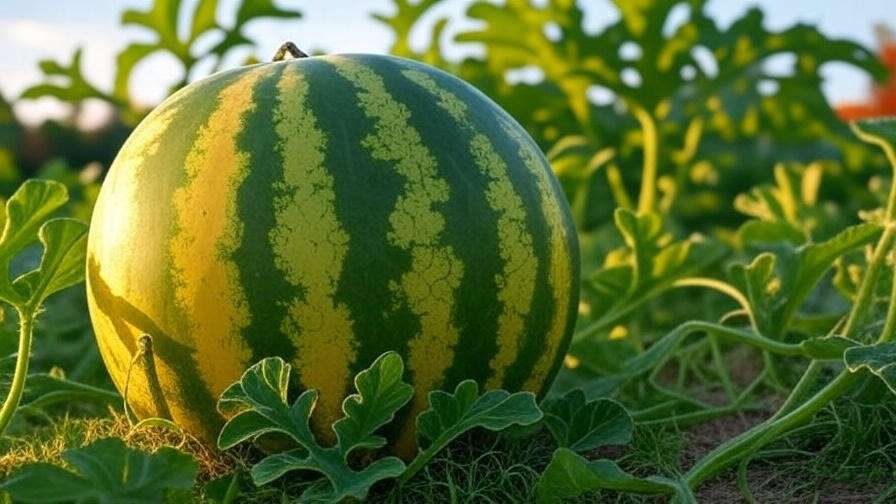Picture this: you’re standing in your garden, slicing into a watermelon large enough to steal the show at any summer gathering, its juicy flesh bursting with sweetness. Growing a watermelon large enough to impress isn’t just a dream—it’s achievable with the right techniques and a sprinkle of patience. Whether you’re a home gardener aiming for bragging rights or a plant enthusiast chasing competition-worthy fruits, this guide will walk you through every step to cultivate massive, flavorful watermelons. Expect expert insights, science-backed methods, and practical tips to transform your garden into a watermelon wonderland. 🌞
Why Grow a Watermelon Large? The Appeal of Giant Fruits 🎯
Benefits of Growing Oversized Watermelons
A watermelon large enough to turn heads offers more than just visual appeal. These giants are perfect for sharing with family, impressing neighbors, or even entering local gardening competitions. Large watermelons often yield more edible fruit, making them ideal for farmers’ markets or community events. Plus, the challenge of growing a massive watermelon is a rewarding journey for any plant lover, combining skill, science, and a touch of creativity. 🌿
Understanding the Search for “Watermelon Large”
When gardeners search for “watermelon large,” they’re seeking practical advice to achieve both size and quality. They want to know how to select the right variety, optimize soil conditions, and care for their plants to produce hefty, delicious fruits. This article addresses those needs with actionable steps, ensuring your watermelons grow bigger, healthier, and tastier than ever. 🍈
Choosing the Right Watermelon Variety for Maximum Size 🌱
Top Varieties for Growing a Watermelon Large
Not all watermelons are created equal when it comes to size. Here are three top varieties known for their potential to grow massive:
- Carolina Cross: Famous for producing record-breaking watermelons, some exceeding 200 pounds, this variety thrives in warm climates with ample space.
- Black Diamond: A reliable choice for large, juicy fruits, often reaching 50–75 pounds with proper care.
- Crimson Sweet: A favorite for balancing size (up to 25–30 pounds) with exceptional flavor, perfect for beginners and experts alike.
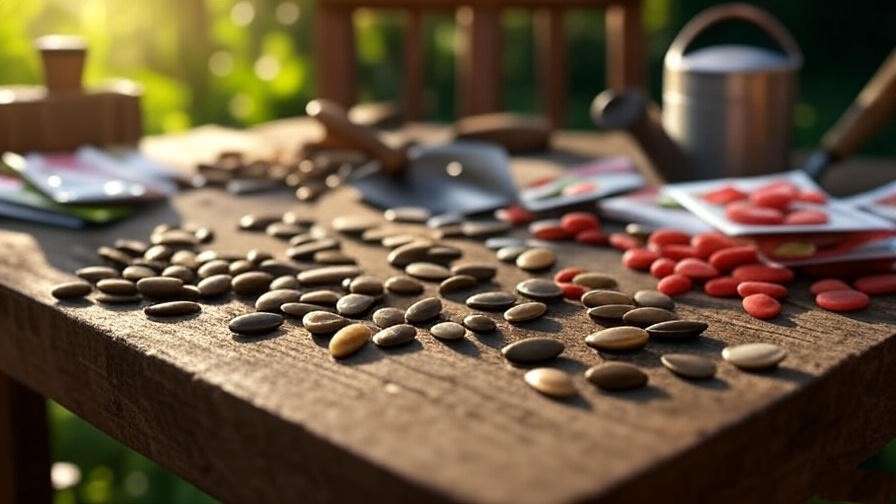
What to Look for in a Variety
When selecting a variety, consider growth requirements like space, sunlight, and season length. Large watermelon varieties need room to sprawl—think 6–8 feet between plants—and at least 90–120 frost-free days. Disease resistance is also key to ensure your plants stay healthy and focus energy on fruit growth. For example, varieties like Carolina Cross are bred for vigor but may require extra pest management. Check seed packets for details on disease resistance and growth habits. 📋
Where to Source Quality Seeds
High-quality seeds are the foundation of a watermelon large enough to impress. Purchase from reputable suppliers like local nurseries, Burpee, or Johnny’s Selected Seeds. Avoid generic or unverified seed sources, as they may produce inconsistent results or mislabeled varieties. Pro tip: Look for hybrid seeds bred specifically for size, and always check reviews from other growers to ensure reliability. 🛒
Preparing Your Garden for Giant Watermelons 🛠️
Soil Requirements for Optimal Growth
Soil is the backbone of growing a watermelon large and healthy. Watermelons thrive in well-draining, loamy soil with a pH between 6.0 and 6.8. Test your soil using a home kit or send a sample to your local extension service for precise results. Amend poor soil with organic matter like compost or aged manure to boost fertility and improve drainage. Aim for a nutrient-rich mix that retains moisture without becoming waterlogged. For example, mix in 2–3 inches of compost before planting to give roots a strong start. 🌍

Space and Layout Considerations
Large watermelon varieties need space to spread their vines. Plan for 6–8 feet between plants, or about 36 square feet per plant for sprawling varieties like Carolina Cross. If space is limited, consider trellising smaller varieties like Crimson Sweet, using sturdy supports to hold heavy fruits. Raised beds are a game-changer for drainage and root health, especially in heavy clay soils. Lay out your garden to maximize sunlight exposure and airflow, reducing the risk of fungal diseases. 🧑🌾
Climate and Sunlight Needs
Watermelons love warmth and sunlight. They need 8–10 hours of direct sun daily and soil temperatures above 70°F for optimal growth. Ideal air temperatures range from 70–85°F during the growing season. In cooler climates, use black plastic mulch to warm the soil and extend the growing season. For northern gardeners, start seeds indoors 3–4 weeks before the last frost and transplant carefully to avoid root disturbance. 🌞
Planting and Caring for Your Watermelon Plants 🌿
When and How to Plant Watermelon Seeds
Timing is critical for growing a watermelon large and healthy. Plant seeds after the last frost when soil temperatures reach at least 70°F, typically in late spring or early summer. For direct sowing, plant seeds 1 inch deep in hills, with 2–3 seeds per hill and 6–8 feet between hills. Thin to the strongest seedling after germination. If transplanting, start seeds indoors in biodegradable pots to minimize root shock. Water thoroughly after planting to settle the soil. 🌱
Watering and Irrigation Techniques
Consistent moisture is essential for large watermelons. Provide 1–2 inches of water per week, adjusting for rainfall. Drip irrigation is ideal, delivering water directly to the root zone without wetting foliage, which reduces disease risk. Avoid overwatering, as soggy soil can lead to root rot. Check for signs of overwatering, like yellowing leaves or stunted growth, and adjust accordingly. Mulch with straw or wood chips to retain moisture and keep roots cool. 💧
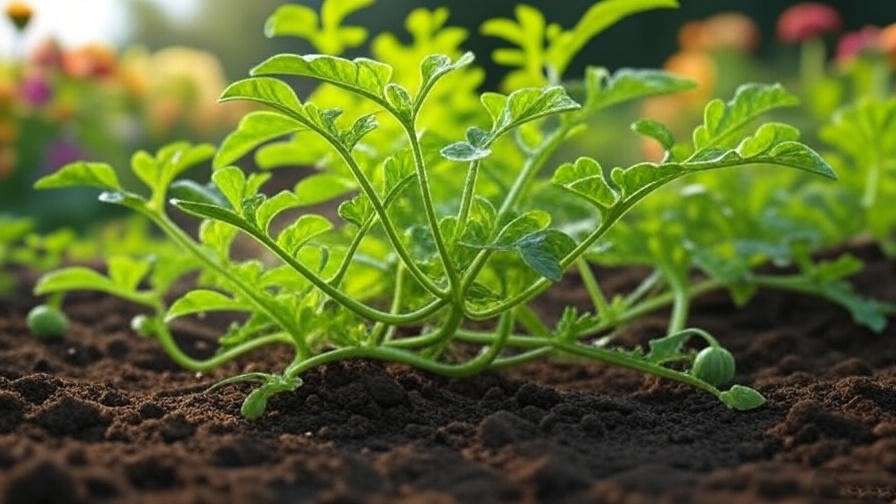
Fertilizing for Size and Flavor
Watermelons are heavy feeders, requiring a balanced supply of nitrogen, phosphorus, and potassium. Start with a nitrogen-rich fertilizer (e.g., 10-10-10) at planting to promote leafy growth. Switch to a phosphorus- and potassium-heavy blend (e.g., 5-10-10) once flowering begins to support fruit development. Apply fertilizers every 2–3 weeks, following package instructions. Organic options like fish emulsion or compost tea work wonders for a mid-season boost. Over-fertilizing can lead to lush vines but small fruits, so balance is key. 🐟
Pruning and Vine Management
Pruning helps direct energy toward growing a watermelon large and healthy. Once the main vine develops, remove secondary vines (suckers) to focus growth on the primary fruit. Limit each plant to 2–3 fruits for maximum size, pinching off additional flowers or small fruits. For heavy watermelons, use slings or netting to support fruits and prevent vine damage. Check vines weekly for overcrowding and ensure good airflow to reduce disease risk. ✂️
Pest and Disease Management for Healthy, Large Watermelons 🐞
Common Pests to Watch For
Pests can sabotage your efforts to grow a watermelon large and healthy. Common culprits include aphids, cucumber beetles, and spider mites. Aphids suck sap from leaves, weakening plants, while cucumber beetles can transmit bacterial wilt. Spider mites thrive in hot, dry conditions, causing stippled leaves. To control pests organically, use neem oil sprays or introduce beneficial insects like ladybugs. Companion planting with marigolds or nasturtiums can deter beetles naturally. Inspect plants weekly, focusing on leaf undersides, and act quickly to prevent infestations from spreading. 🕷️
Diseases That Affect Watermelon Size
Diseases like powdery mildew, fusarium wilt, and anthracnose can stunt growth and reduce fruit size. Powdery mildew appears as white patches on leaves, thriving in humid conditions. Fusarium wilt causes wilting and yellowing, often linked to soil-borne fungi. Anthracnose leads to dark, sunken spots on fruits. Prevent diseases by practicing crop rotation, avoiding overhead watering, and maintaining good airflow. Choose disease-resistant varieties like Black Diamond to minimize risks. If symptoms appear, remove affected plant parts and apply organic fungicides like sulfur for mildew. 🩺

Pollination Tips for Bigger Fruits
Pollination is critical for growing a watermelon large and well-formed. Watermelons rely on bees for natural pollination, so encourage pollinators by planting pollinator-friendly flowers like zinnias nearby. If bee activity is low, hand-pollinate by transferring pollen from male flowers (thin-stemmed) to female flowers (with small fruit at the base) using a small brush. Ensure pollination occurs early in the morning when flowers are open. Poor pollination can result in small or misshapen fruits, so monitor flower health and act if needed. 🐝
Harvesting and Storing Your Giant Watermelons 🍉
When to Harvest for Peak Size and Flavor
Timing your harvest is key to enjoying a watermelon large and flavorful. Look for these ripeness signs: a dull thud when tapped, a dried-up tendril near the fruit, and a creamy yellow ground spot where the melon rests. Most large varieties, like Carolina Cross, take 90–120 days to mature. Harvest too early, and you’ll miss out on size and sweetness; too late, and the fruit may overripen or crack. Use a sharp knife to cut the stem, leaving a few inches attached. Pro tip: A creamy yellow ground spot is a reliable indicator of ripeness. ✅
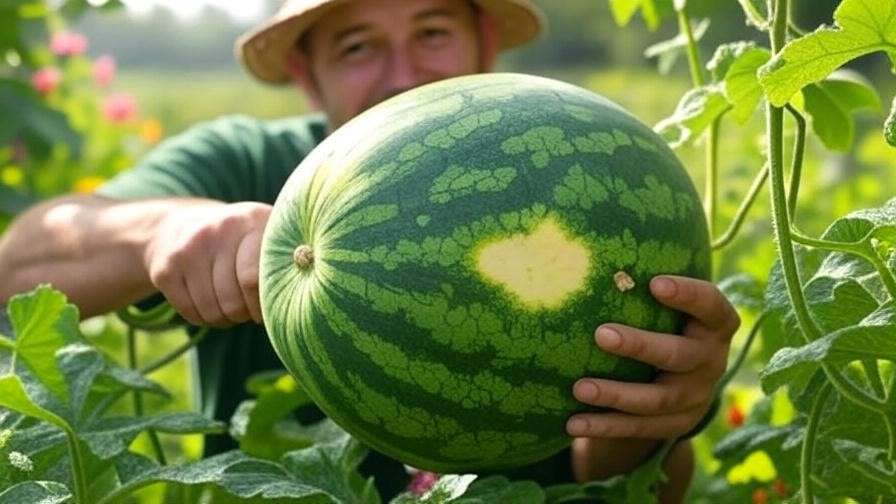
How to Handle and Store Large Watermelons
Handling a watermelon large enough to impress requires care. Use two people or a wheelbarrow to move heavy fruits without bruising them. Store watermelons in a cool, dry place (50–60°F) to extend freshness for up to a month. Avoid stacking heavy melons, as pressure can cause cracking. For immediate use, try recipes like watermelon salsa or smoothies. Save seeds from your best fruits for next season by rinsing, drying, and storing them in a cool, dry envelope. Share extras with neighbors to spread the joy! 🥗
Troubleshooting Common Challenges in Growing Large Watermelons 🚩
Why Isn’t My Watermelon Growing Large?
If your watermelon isn’t reaching the desired size, check for these issues:
- Poor soil fertility: Test soil and add compost or a balanced fertilizer.
- Inadequate water: Ensure consistent 1–2 inches of water weekly.
- Overcrowding: Too many fruits per vine can limit size; thin to 2–3 fruits.
Solutions include adjusting irrigation, fertilizing with a phosphorus-heavy blend, and pruning excess vines. Regular monitoring helps catch problems early. 🔍
Dealing with Cracked or Misshapen Fruits
Cracked or misshapen watermelons often result from inconsistent watering or rapid growth spurts. To prevent cracking, maintain steady moisture with drip irrigation and mulch. Support heavy fruits with slings to reduce stress on vines. Misshapen fruits may stem from poor pollination, so ensure adequate bee activity or hand-pollinate. If cracks appear, harvest immediately to salvage edible portions. Consistency in care is your best defense against these issues. 🛠️
Expert Q&A: Answering Reader Questions
- Can I grow a large watermelon in a small garden? Yes, with compact varieties like Crimson Sweet and trellising. Use sturdy supports and limit fruits to one per plant.
- How do I know if my soil is good enough for big watermelons? Test for pH (6.0–6.8) and nutrient levels. Add organic matter if drainage or fertility is poor.
- What’s the biggest mistake new growers make? Overwatering or neglecting pruning, both of which reduce fruit size. 🌱
Bonus Tips for Growing Competition-Worthy Watermelons 🏆
For gardeners aiming to grow a watermelon large enough for competitions, adopt these pro techniques:
- Select one main fruit: After pollination, choose the healthiest fruit and remove others to focus plant energy.
- Use shade cloths: Protect fruits from sunscald during intense heat.
- Track growth: Measure fruit weekly and keep a log to monitor progress. Some growers report daily growth of 1–2 pounds for varieties like Carolina Cross!
Join local gardening clubs or online forums like the Giant Watermelon Growers Network for tips and inspiration. Competitions often reward size and presentation, so keep fruits blemish-free. 🥇
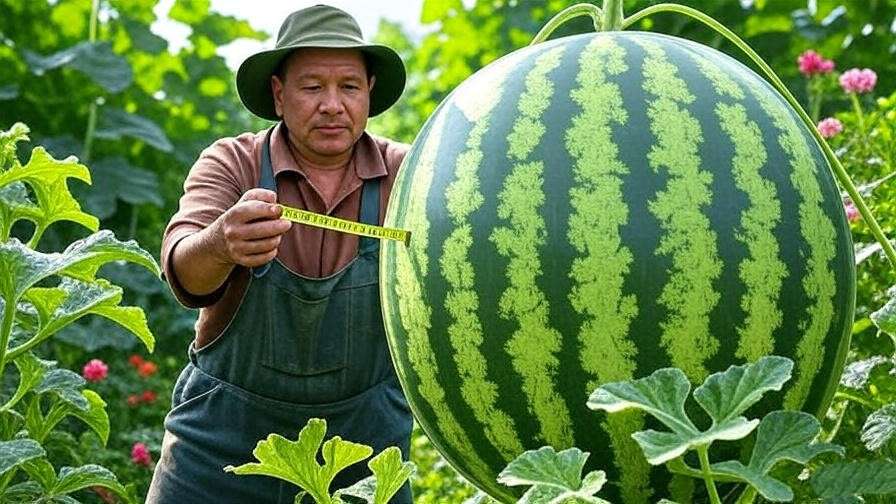
FAQs About Growing a Watermelon Large ❓
- How long does it take to grow a large watermelon? Most large varieties take 90–120 days from planting to harvest, depending on climate and care.
- Can large watermelons grow in containers? Yes, but use large containers (20+ gallons) and compact varieties. Support vines with trellises.
- What’s the biggest watermelon ever grown? The Guinness World Record is 350.5 pounds, set by a Carolina Cross in 2013.
- How much water does a large watermelon plant need? About 1–2 inches per week, adjusted for rainfall and soil type.
- Are large watermelons less flavorful than smaller ones? Not necessarily—varieties like Crimson Sweet maintain flavor at larger sizes with proper care.
- What’s the best fertilizer for giant watermelons? A balanced 10-10-10 early on, switching to 5-10-10 during fruiting, or organic options like compost tea.
Conclusion: Your Path to Growing a Watermelon Large Enough to Impress 🌟
Growing a watermelon large enough to wow your garden is a rewarding journey that combines science, patience, and a love for plants. From selecting the right variety like Carolina Cross to preparing nutrient-rich soil, watering consistently, and managing pests, every step counts. By following this guide, you’re equipped with expert-backed strategies to cultivate massive, juicy watermelons that steal the show. Start planting today, track your progress, and share your giant fruits with pride. Visit our related guides on soil health and pest control for more tips, and let us know how your watermelon-growing adventure goes! 🌍

